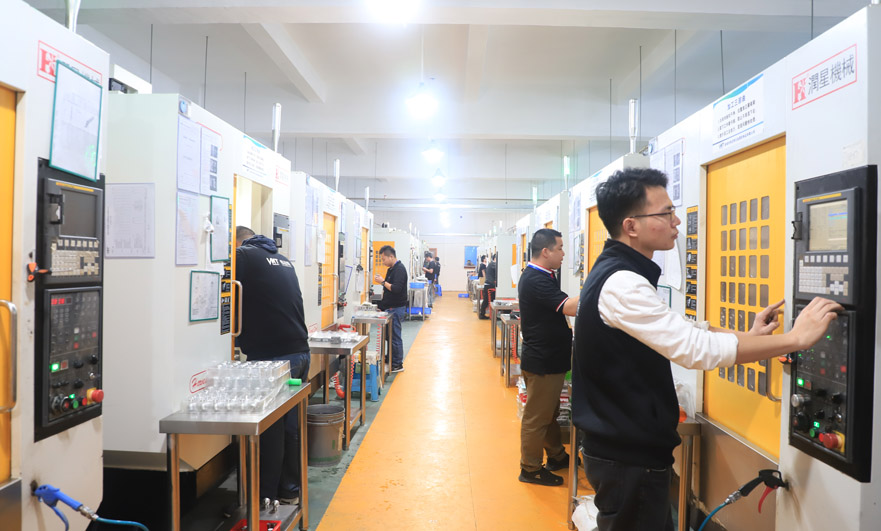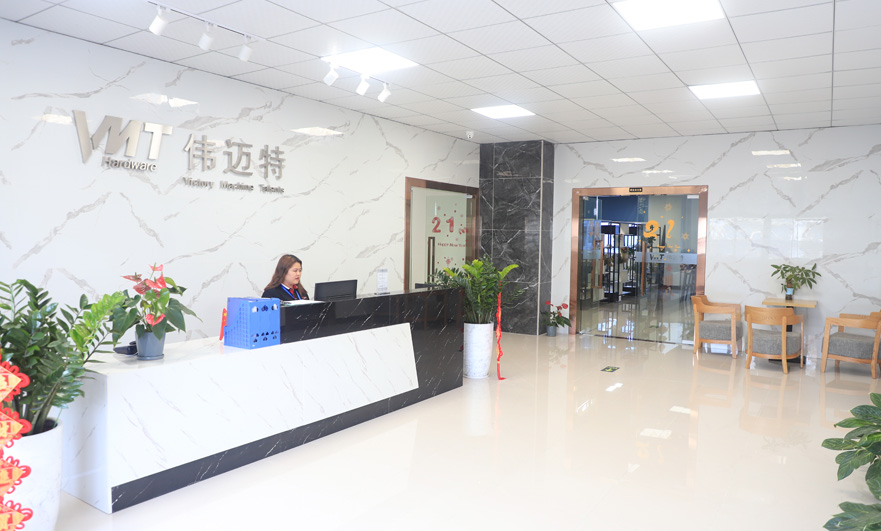15 years one-stop China custom CNC machining parts factory

Hey there I’m VMT Sam!
With 25 years of CNC machining experience we are committed to helping clients overcome 10000 complex part-processing challenges all to contribute to a better life through intelligent manufacturing. Contact us now
 149 |
Published by VMT at Aug 25 2022
149 |
Published by VMT at Aug 25 2022
Aluminum alloy is obtained by adding other metal elements to metal aluminum to obtain a metal alloy, such as silicon, iron, copper, aluminum, etc. The aluminum alloy obtained by adding other metals has the characteristics of low density, high strength, corrosion resistance, etc., aluminum alloy parts The machining process can separate roughing and finishing. After rough machining, heat treatment of CNC machined parts to fully release cutting stress and residual heat, and then finish machining, will greatly improve the machining quality of the parts.
1. CNC machining of aluminum parts
Also known as CNC machining, automatic lathe machining, CNC lathe machining, etc.
(1) Use general machine tools such as turning, milling, planing, drilling, grinding, etc. to process CNC machining parts of molds, and then carry out necessary fitter repairs and assemble them into various abrasive tools.
(2) For CNC machining parts with high precision requirements, it is difficult to ensure high machining accuracy with ordinary machine tool CNC machining, so it is necessary to use precision machine tools for machining.
(3) In order to make the CNC machining parts of the mold, especially the punches with complex shapes, the processing of the concave model holes and the cavity more automated, and reduce the workload of the fitter, it is necessary to use CNC machine tools (such as three-coordinate CNC milling machines, CNC machining centers. , CNC grinding machines and other equipment) CNC machining mold parts.

2. Stamping of aluminum parts
Stamping is a CNC machining method for forming workpieces (stamping parts) of the required shape and size by applying external force to sheets, strips, pipes and profiles by means of presses and dies to cause plastic deformation or separation. With the help of the power of conventional or special stamping equipment, the sheet metal is directly subjected to deformation force in the mold and deformed, so as to obtain the production technology of product parts with certain shape, size and performance. Sheet metal, mold and equipment are the three elements of stamping processing. Stamping is a metal cold deformation processing method, so it is called cold stamping or sheet stamping, or stamping for short. It is one of the main methods of metal plastic CNC machining.
3. Precision casting of aluminum parts
Precision casting is a special casting. Parts obtained in this way generally do not require further machining. Such as investment casting, pressure casting, etc. The common practice is: first design and manufacture a mold according to the product requirements (with very little or no margin), cast wax by casting, and obtain the original wax mold; repeat paint and sand on the wax mold Process, hardening shell and drying; then melt the internal wax mold to dewax and obtain the cavity; roast the shell to obtain sufficient strength; pour the required metal materials, and remove the sand after shelling to obtain High-precision finished products, and then heat-treated and cold-worked according to product needs.
4. Powder metallurgy of aluminum parts
Powder metallurgy is a technology for manufacturing metal powder, and using metal powder as raw material, through mixing, molding and sintering, to manufacture materials or products. It includes two parts:
(1) Manufacture of metal powder (also including alloy powder, hereinafter collectively referred to as "metal powder").
(2) Using metal powder (sometimes also adding a small amount of non-metal powder) as raw material, after mixing, molding and sintering, manufacturing materials (called "powder metallurgy materials") or (called "powder metallurgy products")
5. Injection molding of aluminum parts
The solid powder and the organic binder are uniformly kneaded, and after granulation, they are injected into the cavity of the mold by an injection molding machine under the heating and plasticizing state (~150 ° C), and then the formed blank is formed by chemical or thermal decomposition. The binder is removed in the final product, and finally sintered and densified to obtain the final product.
The above is just the opinion of the VMT CNC machining factory. If you have a better one, you can contact us: inquiry@vimetal.com.cn to discuss with us.

VMT13 years custom precision CNC machining parts, metal, plastic prototype processing. Its business covers 62 countries around the world, covering military, medical, semiconductor, automotive and other fields. 40+ materials and 15+ surface finish options with free service design, project reviews and DFM analysis. To ensure the quality of parts, we passed the ISO9001 quality system, IATF16949 certificate and SGS on-site factory audit in 2015. No matter how complicated your part structure is, or your product encounters technical problems, we can provide you with professional services, saving you 15% of the time cost and communication cost!
Ready To Start Your Next Project?
Get Instant Quote

Request a Free Quote
Send us a message if you have any questions or request a quote. We will get back to you ASAP!
